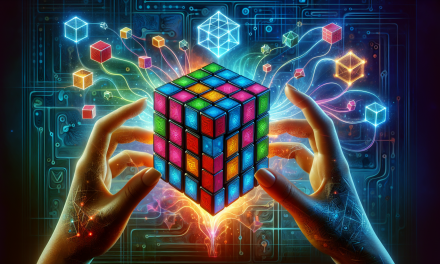Picture this: you’re sitting with a friend, and they place 21 matchsticks on the table between you. They smile mysteriously and say, “We take turns removing 1, 2, or 3 matchsticks. Whoever takes the last matchstick loses.” Before you know it, no matter what moves you make, you’re holding that final, losing matchstick. Again and again.
What just happened wasn’t luck or chance—it was mathematics disguised as a game. Your friend had discovered the secret pattern hidden in Nim, one of the oldest and most elegant mathematical games ever created. And here’s the beautiful thing: understanding games like Nim doesn’t just make you better at winning matchstick challenges. It teaches you to think like a computer scientist, spotting patterns and building logical strategies that apply far beyond any game board.
When Games Become Mathematical Playgrounds
Mathematical games are like puzzles with a twist—they follow precise rules, but discovering the winning strategy requires the same kind of logical thinking that powers everything from search engines to smartphone apps. Think of them as training grounds for your brain, places where you can safely experiment with the kind of pattern recognition and strategic planning that coders use every day.
Take our matchstick game, formally called Nim. The name comes from an old German word meaning “to take,” which perfectly captures the essence of the game. But Nim isn’t just about taking—it’s about understanding the magical numbers that guarantee victory. In the 21-matchstick version, the secret lies in multiples of four. If you can always leave your opponent with a number of matchsticks that’s a multiple of four, you’ll win every time.
Why four? Because no matter what your opponent takes (1, 2, or 3), you can always respond by making your combined moves equal exactly 4. If they take 1, you take 3. If they take 2, you take 2. If they take 3, you take 1. It’s like a mathematical dance where you’re always one step ahead.
Hex: Where Topology Meets Strategy
If Nim is like a number puzzle, then Hex is like geometry come to life. Invented by mathematician John Nash (yes, the genius from “A Beautiful Mind”), Hex is played on a diamond-shaped board made up of hexagonal cells. Each player tries to create an unbroken chain of their pieces connecting their two opposite sides of the board.
What makes Hex fascinating isn’t just the gameplay—it’s the mathematical guarantee lurking beneath the surface. In any completed game of Hex, exactly one player must win. There are no ties, no stalemates. This might seem obvious, but it’s actually a profound mathematical truth called the “no-draw theorem.”
Imagine trying to prove this to a friend. You could play thousands of games and never see a draw, but that wouldn’t be mathematical proof—that would just be evidence. The real proof requires thinking about the board like a computer scientist would: as a graph where each hexagon is connected to its neighbors, and victory means finding a path through this graph from one side to the other.
Here’s where it gets really cool: the proof that Hex can’t end in a draw actually uses the same logical structure that computer scientists use to prove that certain algorithms will always find a solution when one exists. It’s called a “constructive proof”—instead of just saying “trust us, it works,” it shows you exactly how to build the solution step by step.
The Logic Behind the Fun
Both Nim and Hex teach us something fundamental about how mathematicians and computer scientists think: they look for invariants. An invariant is something that stays true no matter what changes happen around it. In Nim, the invariant is that magical multiple-of-four pattern. In Hex, it’s the fact that as you fill up the board, you’re always getting closer to completing a chain for one player or the other.
This kind of thinking shows up everywhere in computer science. When Google’s search algorithm crawls billions of web pages, it’s looking for invariant patterns in how pages link to each other. When your GPS calculates the fastest route to school, it’s using invariant properties of road networks. When your phone’s autocorrect fixes your typing, it’s relying on invariant patterns in how letters commonly combine in your language.
The beauty of mathematical games is that they let you experience this kind of logical thinking in a safe, playful environment. You’re not debugging code or optimizing databases—you’re just trying to win a game. But the mental muscles you’re building are exactly the same ones that professional programmers use every day.
Beyond Winning: Building Logical Intuition
Let’s try a quick experiment. Grab 15 coins (or bottle caps, or anything small you have lying around). You and a friend take turns removing 1, 2, or 3 coins. Whoever takes the last coin loses. Before you start playing, pause for a moment. Can you spot the winning strategy?
If you said “always leave a multiple of 4 coins,” you’re absolutely right! The pattern from our 21-matchstick game works perfectly here too. But here’s what’s really interesting: you probably didn’t need to do any complicated mathematics to figure this out. Once you understood the principle, your brain automatically applied it to the new situation.
This is exactly how computational thinking works. You learn to recognize patterns, understand underlying principles, and then apply those principles to new problems. It’s like learning to see the mathematical skeleton underneath different-looking challenges.
Hex teaches a different but equally important lesson: sometimes the best strategy isn’t about calculating every possible move, but about understanding the shape of the problem space. Good Hex players develop an intuitive feel for which configurations are “winning” and which ones spell trouble, even if they can’t prove it mathematically.
The Computer Connection
Here’s something that might surprise you: some of the earliest computer programs ever written were designed to play mathematical games. In 1951, a computer called NIMROD was built specifically to play Nim. It was about the size of a small room and could beat human players consistently by following the mathematical strategy we’ve been discussing.
More recently, games like Hex have become testing grounds for artificial intelligence algorithms. The challenge isn’t just to play well—it’s to develop strategies that can work even when the game board gets huge. A computer playing Hex on a 19×19 board needs to evaluate millions of possible positions, but it also needs to recognize patterns and use logical shortcuts, just like humans do.
This connection between games and computation runs deeper than you might expect. The logical thinking required to master Nim—recognizing patterns, planning ahead, understanding invariants—is the same kind of thinking that computer scientists use when designing algorithms. When you’re trying to guarantee you can win at Nim, you’re essentially
writing an algorithm in your head.
Your Mathematical Game Journey
Ready to dive deeper into this mathematical playground? Start simple: grab some coins and challenge your friends to Nim using different starting numbers. Can you figure out the winning strategy for 17 objects? How about 23? Once you’ve mastered the basic version, try variants: what if you can remove 1, 2, 3, or 4 objects on each turn? What changes?
For Hex, you don’t need a fancy board. Draw a diamond shape made of hexagons on paper, or even play on a grid where diagonal moves count as connections. Start with small boards—maybe 5×5 or 7×7—and work your way up as you develop that geometric intuition.
As you play, pay attention to how your thinking evolves. Notice when you start recognizing patterns automatically, or when you develop “hunches” about good moves. These aren’t just gaming skills—they’re the building blocks of computational thinking, the kind of logical pattern recognition that powers our digital world.
The most amazing part? Every time you spot a winning pattern, make a logical deduction, or develop a new strategy, you’re not just playing a game. You’re exercising the same mental muscles that help humans and computers solve complex problems together. In a world increasingly shaped by algorithms and data, that’s not just fun—it’s a superpower disguised as play.








